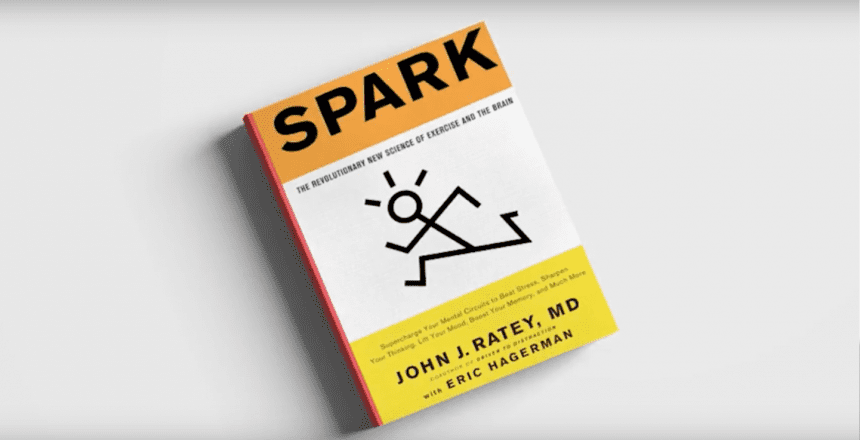When every school across the country went remote in March of 2020, there was a collective spirit around the benefits of physical activity for students. We celebrated the ingenuity of physical education teachers and students to find creative ways to workout at home. And we championed this initiative with curriculum, technology, and resources. We did so, because we knew that exercise’s mental and physical benefits were essential for students’ well-being while living through a pandemic. Then we went back to school. Quickly the benefits of physical activity in schools took a back seat.
Suddenly, many of the schools that embraced new physical education curriculum and technology went ‘back to normal.’ As schools tried to play catch up on core subjects, physical education (PE) took the proverbial back seat. At the same time, headlines started to pop up about the pandemic’s mental and emotional toll on students and its impact on overall academic performance. While schools racked their brains for a solution, physical education teachers couldn’t help but scream in the hopes that someone would listen to them from the ‘back seat.’
Physical education has an incredible opportunity to impact all areas of student development – physically, mentally, socially, and emotionally. More importantly, physical education has done those things for years, but getting the larger education community to recognize that has been far from simple.
Free Fitness Lessons For P.E. Classes
Looking to branch out from the traditional games based P.E model? These 15 ready to go lessons can help!
The Benefits Of Physical Activity For Students Is Not a New Concept
When Dr. John Ratey published his book Spark: The Revolutionary New Science of Exercise and the Brain, it set the course for linking physical education with academic performance. Using a powerful case study at one high school in Illinois, Ratey made the case that “even moderate exercise will supercharge mental circuits to beat stress, sharpen thinking, enhance memory, and much more.”
The book quickly became the gold standard for physical education teachers and the must-cite source for why PE mattered in schools. Like the title insisted, there was a chance for a revolution that made daily physical education and activity a must-have in schools. That was 15 years ago. So why isn’t every school embracing the power of physical education?
Even before the book was first published, school districts were making slow but steady progress in prioritizing a fitness-first physical education program. Physical education teachers pushed to go from a traditional game and sports model to a more comprehensive fitness and wellness model. In doing so, students are introduced to new units like functional fitness, yoga, weightlifting, dance, mindfulness, and other lifelong activities.

Why Physical Activity Is Important For Students
When you look at a student’s average school day, most of the time is spent sitting in class. And as academic performance and classroom behavior issues arise, the role of physical activity is not usually considered in the larger educational equation.
We seek to improve test scores with more class time. We aim to curb classroom behavior issues with meetings and punishment. In doing so, we ignore many of the root causes of why students perform and behave the way they do.
At the heart of all these different challenges is the need for students of all ages to participate in daily physical activity. Kids need daily physical activity levels, whether we are talking about elementary school children or young adult high school students.
There is endless research that backs the importance of physical education and physical activity for:
- Improved Academic Achievement
- Better Cognitive Performance
- Overall Mental Health & Self-Esteem ie Brain Health
- Total Cardiorespiratory Fitness and Physical Health
- Decreased Childhood Obesity
- Better Social Interactions & Relationships
More importantly, the widely accepted amount of daily physical activity needed for students is 60 minutes! We can’t assume that students will get this outside of school. So with everything pointing to the benefits of physical activity in schools and the recommended amount of time, what seems to be the hold-up?

Where Did Physical Fitness In School Go?
There are physical education departments and school districts all across the country working to highlight the power of physical education classes. And when we celebrate these success stories, the common response from the community at large is typically: “I wish we had something like that when I was in school.” Only to be immediately followed by, “Why aren’t more schools doing this?”
More schools aren’t doing this because it takes a significant investment. And when we use the word investment, it doesn’t just mean financial investment. Sure, more money means better equipment, technology, and resources to improve physical activity opportunities. But really, it is an investment in the physical education and wellness program as a whole. It is dedicating time and energy to prioritizing wellness and physical activity.
When we returned to schools after the pandemic, gymnasiums turned into lunchrooms and additional classrooms. If students needed to make up work, they could miss physical education class. We increased time spent in subjects like math and english hoping to improve test scores, not acknowledging that decreasing physical education time would only hurt those chances. Doing these things sends a message, intentional or not, that physical education is not as important as core subjects and other initiatives.
Fitness Curriculum Playbook (PDF)
A fully-loaded playbook with curriculum maps, class set up ideas, and more.
How To Incorporate Physical Activity In The Classroom
The first place to start is the physical education classroom. If we can agree on the various benefits of physical activity in schools, we should look no further than physical education. Physical education teachers are on the frontlines of providing a comprehensive plan for physical fitness in school. But we need to have PE teachers backs!
Steps that every school district can take include:
- Require PE every year, and every semester
- Coordinate the approach to PE across Jr and Sr High Schools so that it is a continued experience of quality physical education, similar to how Math and Science are progressed
- Aim for 150 minutes of PE a week ie: regular physical activity/daily physical education (that’s only 30 minutes a day!)
- Increase the budget for Physical Education programs departments and invest in fitness facilities
Bonus Content! 2-minute video highlighting the power of fitness!
3 Examples of Incorporating Physical Activity In The Classroom
Outside of just physical education class, throughout the entire school physical activity can be a part of class time and the overall school environment. Incorporating physical activity in the classroom can be as simple as short physical activity breaks. Many teachers will include physical activity breaks that allow students to get up and move for even just 5 minutes to split up a longer class period.
Here are three examples from the PLT4M library that can be used not only in physical education class, but any class setting:
Move With Max
It is time to move with Max! We will pick two simple movements, work for 20 seconds, rest for 10 and do 8 total rounds. That is 4 minutes! This video is part of our large fitness lesson plan offering.
Flow On The Go
Flow on the go with Lulu! Take 5 minutes to go through this simple standing flow. Our focus is on forward folds and side bends. This video is part of larger comprehensive yoga lesson plans and content library.
Pick A Side
It is time to play Pick A Side! It is the animal edition today. Go either left or right. Then you will be assigned a movement.
Ready to Learn More?
Schedule a free 10 minute consultation to see how the PLT4M system can help save you time, and empower student learning!
Key Takeaways On The Benefits Of Physical Activity In Schools
Whether you are a PE teacher, classroom teacher, administrator, or just general education enthusiast, we must consider the power and positive effects of physical activity in schools. Unfortunately, we are often quick to cut out recess and physical education classes to make time for other more seemingly important subjects or topics.
Rather than continuing to put physical activity and academic performance at odds with each other, let’s look at the multitude of benefits of physical activity for students. Our young people must be introduced to the benefits of physical activity in schools so that they continue to pursue personal health and wellness beyond school.
Regular physical activity may not be the singular solution to many of the challenges schools face, but it will only help. So let’s embrace the benefits of physical activity in schools for every grade, every age, and every community.
FAQ
What is the recommended amount of daily physical activity for students?
Children need at least 60 minutes of physical activity each day. The activity should be age-appropriate and fun, and kids don’t need to fit it all in at once: They can add up physical activity throughout the day, in short bursts of 10 minutes or longer. (Source: Harvard School Of Public Health)
What resources can schools use to help high school students be physically active?
Over 1,500 schools across the country use PLT4M to promote the importance of physical education and activity. PLT4M partners with middle and high schools in their pursuit of physical fitness in school.












